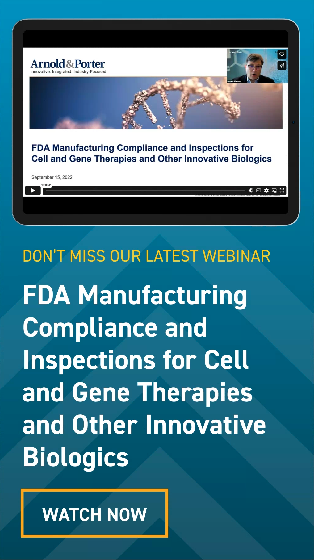At the Association for Accessible Medicines (AAM) Annual Meeting (aka Access! 2025), the Science and Regulatory Affairs Working Group met on February 3, 2025.
This session is always a highlight, and one of my favorite sessions, offering insight into key regulatory and scientific issues that the AAM is currently tackling as well as those that it plans to address in the future. The session also provides a forum for AAM members to raise emerging industry concerns and discuss how AAM can work with its members to address these issues. For instance, the problem with Complete Response Letters containing deficiencies that state information is not in the application when it clearly is, but was overlooked, and the issue of discriminating dissolution testing, which is increasingly being asked for by reviewers, even though the FDA has a preferred dissolution method in its dissolution database.
AAM regulatory staff gave an update on AAM’s 2025 focus and what is on the horizon, which includes:
- Continued FDA Engagement
- The UFAs
- Working Groups
- Partnerships
- GRx+Biosims Conference 2025
In addition, Giuseppe Randazzo, Senior Vice President, Science and Regulatory Affairs, and Scott Kuzner, Senior Director, Science and Regulatory Affairs, provided information on the work of the specific Working Groups under the AAM regulatory umbrella and discussed some of the Working Groups’ accomplishments during 2024 and their focuses for 2025:
- Sciences and Regulatory Affairs Working Group (SRAWG)
- Biosimilars Council Regulatory Policy Working Group
- AAM-USP Working Group
- DSCSA Working Group
- Quality-related work (which will be a bigger focus in 2025)
They gave a summary of the 2024 GRx-Biosims conference attendance, with a focus on FDA participation, and noted that 41 FDA, OGD, or OPQ regulatory project managers had attended, and there were 27 FDA speakers or panelists, over 500 attendees, and 18 breakout sessions. FDA attendance was just the opposite at Access! 2025 as there were none due to the temporary “pause” placed on a number of FDA activities and speaking engagements by the new Administration. This “pause” could also result in the cancellation of some of the meetings and webinars with FDA involvement that have already been announced and scheduled.
AAM staff noted that they have been inundated by the review of an avalanche of late 2024/early 2025 postings under evaluation (i.e., 27 new proposed draft guidance documents), many with calls for comment from industry and AAM membership already. In addition, there are currently open calls for comments on nine Agency-issued guidances. AAM is also getting ready for the beginning of the upcoming reauthorization negotiations for new GDUFA IV and BSUFA VI programs. There are a significant number of other important activities performed by the Regulatory and Science group at AAM; however, listing all of them would use up way too much ink!
AAM gave a brief presentation on the new Country of Origin (COO) requirements for importers of pharmaceuticals, and advised industry, including repackagers, to become familiar with the new requirements in order to avoid any potential enforcement actions. It was noted that COO requirements also pertain to the active pharmaceutical ingredients.
- Announcements:
- June 2024: Customs and Border Protection (CBP) issued a notice (CSMS # 62097992 – Marking Requirements for Repackaged Prescription Medication Imported into the United States) regarding changes related to imported pharmaceuticals, which may be repackaged (see fact sheet, Marking Prescription Medication for Retail Sale, pursuant to Ruling H283420 (CROSS Ruling)).
- November 13, 2024: “CBP webinar, documentation will soon be required upon the importation of these materials.”
- Notice Summary: All commodities imported into the U.S. must be marked with the country of origin to inform the “ultimate purchaser” in the U.S. of the country in which the imported article was made.
- Ultimate Purchaser: This is generally the last person in the U.S. who will receive the article in the form in which it was imported. The “ultimate purchaser” of imported medication repackaged in prescription bottles at retail pharmacies and sold for individual use is the patient or customer at the retail pharmacy, not the retail pharmacy.
- Repackage Certification: Any importer of pharmaceuticals that may be repackaged in a new container for sale to an ultimate purchaser after its release from CBP custody is required to certify that:
- If the importer does the repacking, the new container will be marked to indicate the country of origin of the article according to the marking requirement; and
- If the article is intended to be sold or transferred to a subsequent purchaser or repacker, the importer will notify such purchaser or transferee, in writing, at the time of sale or transfer, that any repacking of the article must conform to the aforementioned requirements.
- Markings: In addition, the importer must have a certificate of marking. There are two means by which to provide this certificate: (1) the preferred method, which would be a blanket certification (specific to the manufacturer and the drug product) for a specified amount of time (e.g., calendar year), which can be submitted electronically; or (2) typed or stamped as part of the invoice, which would need to accompany every imported product.
As AAM (along with its stakeholders) begins the two-year process for UFA IV negotiations, it will examine opportunities for additional improvements in many of the efficiency enhancements from GDUFA III by taking a look at what worked well and what didn’t and proposing revisions that would benefit both the OGD and the industry. Examples of some of the items to be addressed are continued improvement to the controlled correspondence process and improving review times, as well as guidances and PSGs. The negotiating groups will also propose some bold ideas for both the GDUFA and BsUFA programs.
In the current political climate, the UFAs may come under scrutiny from the new Administration. Former FDA Commissioner Scott Gottlieb, M.D. discussed this during a general session at Access! 2025; he believes that it might be useful to pause UFA negotiations for two years and leave the existing ones in place in order to avoid any potential political issues. There are those in the Congress who do not like user fees, but with the intense focus on reducing the budget, it’s hard to see any major changes coming in the near term.




